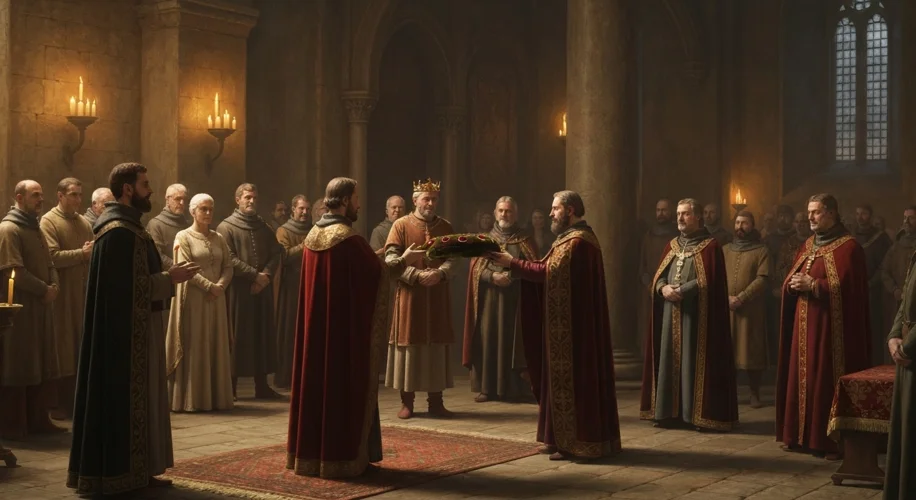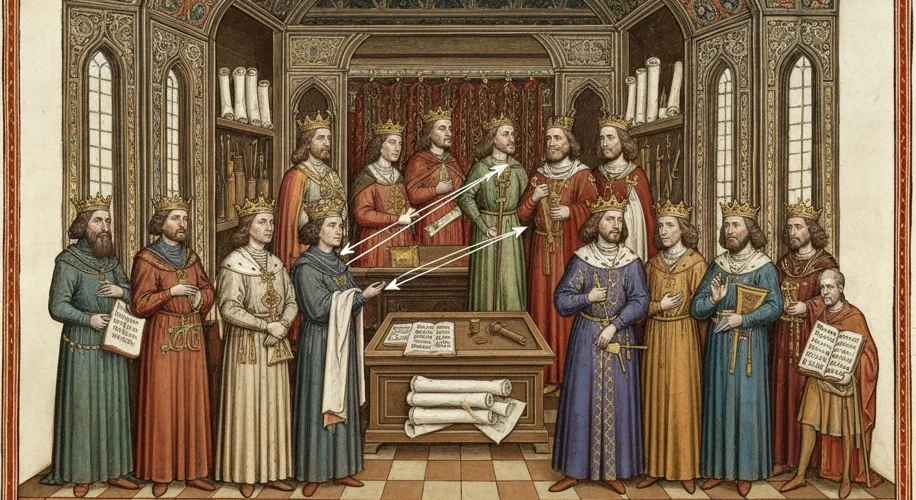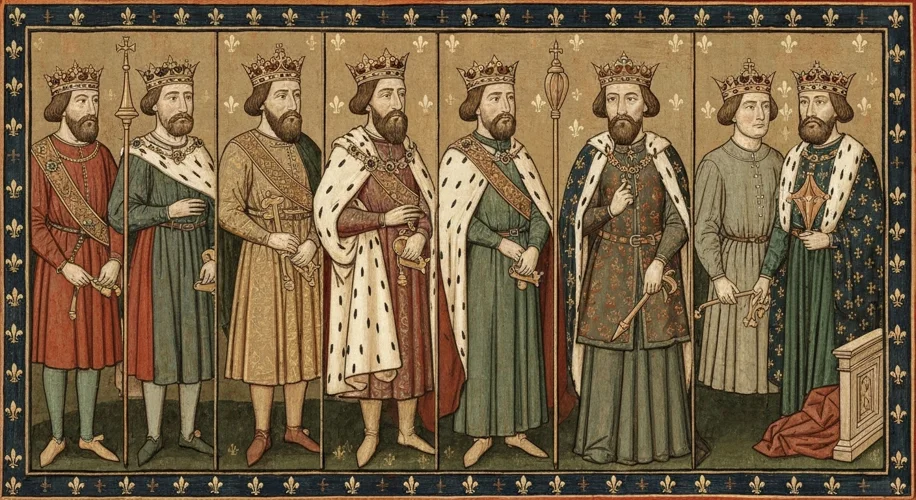In the annals of European monarchies, few dynasties can boast a lineage as unbroken and enduring as the Capetians of France. For over 300 years, from Hugh Capet’s election in 987 to the death of Charles IV in 1328, this powerful family held the French throne, not through conquest or usurpation, but through an astonishingly consistent, albeit at times precarious, line of male succession. This isn’t just a story of luck; it’s a testament to shrewd politics, strategic marriages, and a deep-seated understanding of dynastic survival.
A Fragile Beginning: The Election of Hugh Capet
To understand the Capetian phenomenon, we must first look at its somewhat inauspicious start. The year is 987. The Carolingian dynasty, once mighty, had fractured. France, or rather the Kingdom of the West Franks, was a patchwork of powerful duchies and counties, with the king often acting more as a primus inter pares – a first among equals – than an absolute ruler. Hugh Capet, Duke of the Franks, was elected king by a council of nobles. His claim was not by direct bloodline to the last Carolingian, but through a complex web of kinship and political maneuvering. The stage was set for a dynasty that would fundamentally reshape France.

The “Capetian Compact”: More Than Just a Name
What truly set the Capetians apart was their innovation in ensuring continuity. Unlike many contemporary rulers who worried about succession only when they were on their deathbeds, the Capetians proactively secured their dynasty’s future. The cornerstone of this strategy was the joint coronation. As soon as a Capetian king ascended the throne, he would ensure his eldest son was also crowned and recognized as heir. This was a powerful symbolic and practical act. It presented the realm with a ready-made successor, bypassing the potential for disputed elections or power vacuums. Imagine the scene: a king, still basking in the glory of his own coronation, immediately seeing his son anointed, solidifying the family’s grip on power for generations to come.
This practice, initiated by Hugh Capet himself for his son Robert II, became a defining feature of their rule. It wasn’t merely about having a male heir; it was about having a recognized and crowned male heir, insulated from the capricious winds of noble opinion. This created a sense of inevitability, a powerful psychological weapon that discouraged rival claimants.
The Marriage Game: Securing the Bloodline
Beyond the coronation, the Capetians were masters of dynastic diplomacy, particularly through marriage. Their brides were chosen not just for love or alliance, but for their ability to produce male heirs. Queens who bore daughters were often sidelined or their marriages annulled, making way for new unions with the potential for sons. This might sound brutal by modern standards, but in the context of dynastic survival, it was a pragmatic, if harsh, reality.
Consider Louis VII. His first marriage to Eleanor of Aquitaine was politically significant but produced only daughters. The eventual annulment of their marriage and Louis’s subsequent marriage to Constance of Castile, who bore him two sons, underscores the relentless pursuit of male heirs. Each marriage was a calculated risk, a gamble to ensure the continuation of the Capetian line.
Navigating the Storms: Challenges and Triumphs
The Capetian dynasty was not without its challenges. There were periods where the king’s direct heirs were few, or where a king died without a clear successor. The succession of Philip II Augustus, for example, was secured through his father Philip I’s foresight in crowning him during his own lifetime. However, the system largely held. The proximity of the coronation of the heir to the coronation of the king created a visual and political continuity that was hard to break.

Even when the direct male line from Hugh Capet’s son Robert II threatened to end with John I, who died an infant in 1316, the system had produced a stable enough structure. The crown passed to his uncle Philip V, and then to his cousin Charles IV, both Capetians. The very real threat of succession crises, which plagued other kingdoms, was largely averted in France, thanks to the established Capetian practices.
The End of an Era, The Birth of a New Dynasty
The death of Charles IV in 1328 without a male heir marked the end of the direct Capetian line. However, the principles they had established, particularly the Salic Law (which barred inheritance through the female line), paved the way for the continuation of French monarchy through the cadet branch of the Valois. The legacy of unbroken male succession, established over three centuries, had created a powerful precedent that shaped the very identity of the French monarchy.
Why It Matters: The Capetian Legacy
The Capetian dynasty’s success in maintaining an unbroken male line for so long was a remarkable feat in medieval Europe. It provided France with a stability and continuity that allowed for the consolidation of royal power, the development of a unified administration, and the eventual rise of France as a major European power. This dynastic coherence wasn’t solely the result of good fortune; it was the product of deliberate strategy, political acumen, and a deep understanding of the levers of power. The Capetians didn’t just rule France; they built its dynastic foundation, ensuring that the crown, and the nation it represented, would pass from father to son, generation after generation, for centuries.

